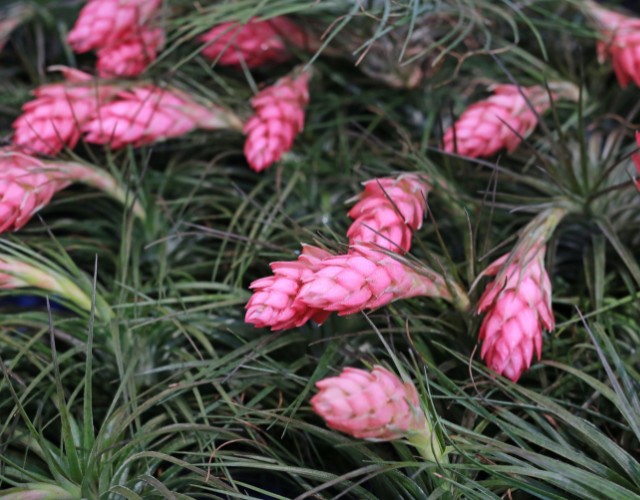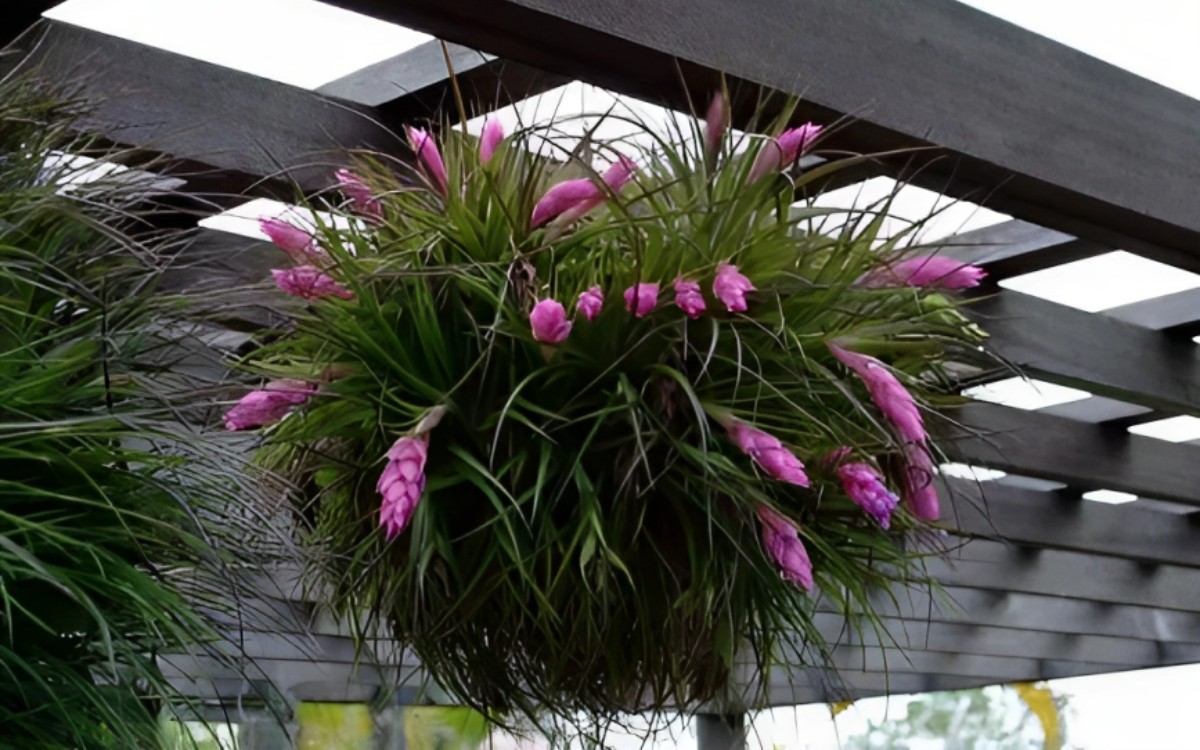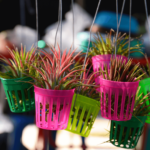The Tillandsia stricta, popularly known as Stricta Air Plant, is an easy-to-cultivate plant that can be placed in various areas of your garden.
Found in South and Central America, this plant thrives in tropical and subtropical forests as an epiphyte, meaning it hangs on other plants.
Keep reading, as in this article, you will learn about the characteristics and cultivation of the Stricta Air Plant.
Plant Characteristics
The Stricta Air Plant has triangular leaves arranged in thick rosettes. Its leaves can be of various colors, such as:
- Green
- Gray
- Brown
- Black
Its leaves are covered with trichomes, structures similar to hairs that help the plant absorb water and nutrients from the air.
Its stems are long and produce flowers in various colors, including:
- Blue
- Purple
- Yellow
Its flowers last only one day, but the plant can bloom several times a year.
This is a fast-growing plant; its shoots reach maturity in 8 to 12 months.
Uses
Although typically used for garden decoration, the Stricta Air Plant is also used in some regions to treat health problems.
Some populations use Tillandsia stricta to treat health issues such as gonorrhea and inflammatory processes.
In interior decoration, the Stricta Air Plant is a popular plant to be grown in pots, hanging baskets, or directly on the wall. The plant is easy to care for and can survive in low-light environments.
Below you will find more details on how to care for this plant.
Caring for Stricta Air Plant
Considered easy to cultivate, the Stricta Air Plant is a plant that likes to be grown hanging and, being epiphytic, should not be planted in soil.
Below, you will learn in more detail the necessary care to keep this plant healthy in your garden.
Soil and Moisture
Tillandsia stricta can be grown without the use of substrates because it absorbs water and nutrients from the air.
In its natural habitat, it is found in hot and humid tropical regions, so place it in warm and humid locations.
Watering
Watering should be done in the morning, preferably with rainwater or filtered water.
During the summer, you should water your plant more frequently than in winter.
Be very careful not to let the soil become waterlogged.
Due to its very sensitive roots, the Stricta Air Plant should not be in waterlogged or damp soil for too long, as this can cause root rot.
If the roots of your Tillandsia rot, they will need to be pruned.
Fertilization
The Stricta Air Plant does not require fertilization; however, a good fertilizer can help in its growth and flower development.
If you choose to fertilize Tillandsia stricta, use a diluted fertilizer in the watering water.
Where to Plant
Understanding that this plant is epiphytic is a crucial step in choosing the planting location for your Stricta Air Plant.
Basically, epiphytic plants hang, so it is ideal to fix your Tillandsia stricta, below are some places you can do this:
- Tree branches
- Dry branches
- Vented wooden baskets
- Shells
- Pots
A recommended technique for fixing Tillandsia stricta is to use cut horizontal strips of nylon stockings.
Conclusion
The Stricta Air Plant is an excellent plant option to cultivate if you have somewhere to fix it in your garden.
I hope that with this article, you have learned a little more about this plant, especially about its cultivation.
This bromeliad is part of the Tillandsia genus, which has several interesting plants to cultivate. If you want to learn more about these and other plants, see the articles below:
- Lipstick Plant – How to Care, Prune and Fertilize
- Monarch Fern – How to Care and Propagate
- Oncidium (Dancing-lady Orchid) – How to Care in 9 Steps
If you have any questions, leave a comment below because I’ll be very happy to respond.





